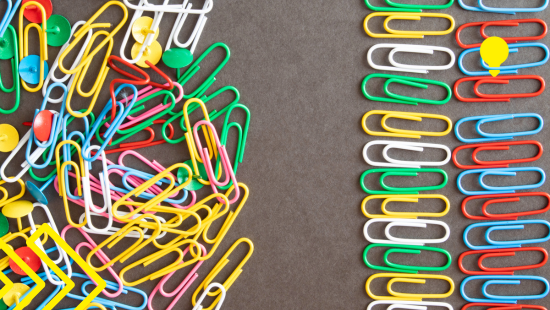13 May 2024

Introduction: Understanding Chaos
Chaos is characterized by lack of order, unpredictability, and constant change. For creatives, chaos can be both a blessing and a curse. On one hand, chaos breeds creativity by disrupting normal patterns of thinking and introducing new possibilities. The unpredictability of chaos allows creatives to make unexpected connections and pursue ideas without restrictions. Chaos shakes us out of our comfort zones, forcing us to improvise and problem solve in innovative ways.
However, too much chaos can also impede productivity. With no structure or sense of direction, creatives may end up scattered and unable to focus. The turbulent nature of chaos makes it difficult to stick to routines, meet deadlines, or work toward long-term goals. Unchecked chaos leads to burnout.
The key is recognizing that chaos is not inherently good or bad. Rather than viewing chaos as an obstacle, creatives can embrace it as an integral part of their process. Chaos can be channeled in constructive ways, providing the spark of inspiration while also being reined in to avoid total disorganization. Creatives who learn to ride the waves of chaos – going with the flow at times and providing structure at others – will be best equipped to thrive.
Embracing Your Creative Process
Creativity often thrives within chaos and messiness. Rather than forcing yourself into a cookie-cutter creative process, embrace the unique way your inspiration ebbs and flows. Give yourself permission to follow your ideas in unexpected directions without judging the process. Some of history’s most brilliant minds didn’t neatly fit their creative genius into a pre-prescribed system.
Albert Einstein, for example, was known for his famously chaotic desk and office. His notes and research were scattered in piles around the room in no particular order. But out of that mess arose some of the most groundbreaking scientific discoveries of the 20th century.
Likewise, Charles Dickens always had multiple story ideas swirling around in his head at once. He would work on several novels concurrently, jumping back and forth between drafts haphazardly. In his chaotic writing process, Dickens produced classic works like Oliver Twist, A Tale of Two Cities, and Great Expectations that have stood the test of time.
So don’t feel pressured to conform your creative process to someone else’s standards of order and tidiness. The path to your best ideas might seem scattered or strange to others, but it’s the one that works for you. Trust in your own unconventional methods.
Organizational Strategies for Chaotic Creatives
Chaotic creativity can make it difficult to stay organized, but having some reliable systems in place can help channel that creative energy productively. Here are some strategies to try:
- Mind mapping: Visually mapping out your ideas using pictures, colors, and keywords can help you see connections and relationships between concepts. Mind mapping is less rigid than traditional outlines and allows your thoughts to flow more freely.
- Bullet journaling: Using a notebook as a planner, to-do list, and notebook combined can help contain your chaos on paper. Customize your own rapid logging system with shortcuts and symbols that make sense for your workflow.
- Digital tools: Apps like Trello, Asana, Notion, and Milanote allow you to organize projects and collate creative inspiration digitally. Experiment to find the software that clicks with how your brain works.
- Note-taking: Always carry a notebook or voice recorder to capture ideas and observations as they arise. Don’t trust that you’ll remember everything later – get it out of your head and onto paper or into a file.
- Categorizing and tagging: Come up with a file folder structure, tagging system, or notebook organization method that allows you to find key information when you need it again. Group similar ideas, projects, or inspiration sources.
- Checklists: Break large tasks down into checklists of smaller action steps. You can feel a sense of accomplishment as you tick off items, and the checklist will keep you on track.
- Calendars: Use a paper calendar or digital calendar to map out deadlines, meetings, and work blocks. Refer to it regularly to stay on schedule.
The key is finding organization systems that complement your natural tendencies rather than fighting against them. Allow some flexibility in your methods to adapt to changing needs and inspiration.
Time Management Techniques for Creatives
Time management can be especially challenging for creatives who thrive on spontaneity and introducing order into their chaotic workflow. However, establishing some time management practices can help maximize your productivity without sacrificing your creative process. Here are some techniques tailored to the needs of chaotic creatives:
Time blocking – Block out chunks of time in your calendar dedicated to creative work. Define blocks for brainstorming, content creation, administrative tasks, etc. This creates defined spaces for you to focus.
Pomodoro technique – Utilize the Pomodoro technique of working in short, concentrated 25-minute bursts separated by brief breaks. This rhythm can suit creatives who struggle to focus for long stretches.
Creative deadlines – Self-impose deadlines to help drive progress on creative projects. Make the deadlines short-term and realistic based on your natural workflow. Use deadlines as positive motivation rather than allowing them to induce stress.
Hourly blocks – Define what you want to accomplish hour by hour in your workday. Be realistic about what you can achieve in a 60-minute block and avoid overscheduling yourself. Re-assess hourly goals as needed.
Visual schedules – Some creatives respond better to visual timelines rather than rigid schedules. Create a visual timeline with project milestones, deadlines, and daily goals. Customize it to suit your natural rhythms.
Time inventories – Conduct a time inventory to analyze how you currently spend your time. This can shine a light on wasted time that could be better utilized for creative work.
Batch similar tasks – Group similar administrative or maintenance tasks together in blocks to minimize context switching. This enables you to focus creative energy during designated project times.
The key is trying different time management techniques until you find a system that respects your innate creative process rather than resisting it. Maintain flexibility and adjust your approach as needed.
Creating a Productive Environment
A chaotic workspace can contribute to feeling creatively blocked. While some like the buzz of a messy desk, too much clutter can be overstimulating. On the other hand, a minimalist space might leave you feeling uninspired. Finding the right balance for your needs takes experimentation.
Here are some tips for creating an environment that feels productive for your creative process:
- Declutter your workspace. Put away any non-essential items, papers, and knickknacks. Consider donating or recycling what you no longer need. A clear desk helps provide a blank slate to work from.
- Add inspirational decor. Surround yourself with artwork, photos, and objects that spark creativity for you. Plants and natural elements can also lend a calming presence.
- Designate separate spaces. If possible, have an area for generating ideas separate from where you execute them. This allows you to tap into different modes of thinking.
- Minimize digital distractions. Temporarily silence phone notifications and close distracting computer tabs and programs when you need to focus. Apps like Freedom can help block sites.
- Let in natural light and air. Open blinds and crack a window to refresh your mental state. Soft ambient lighting is also less harsh than bright overheads.
- Play the right music. Find instrumental or non-lyrical music that aids your workflow and creativity without being distracting. Or opt for silence.
- Keep supplies stocked and organized. Know where tools and materials are located so you’re prepared whenever inspiration strikes. A little organization helps save creative energy.
Your environment impacts your mindset more than you may realize. Tweaking your workspace to maximize inspiration while minimizing chaos can aid your productivity.
Finding Balance Between Chaos and Order
The path of creativity often lies between the forces of chaos and order. While a certain amount of chaos and messiness can unleash creative thinking, too much can quickly lead to overwhelm and frustration. On the other hand, an overemphasis on order and structure can eliminate the spontaneity and serendipity that feeds the creative spirit. The key is to find a balance where your creative process has room to flourish.
For many chaotic creatives, establishing regular routines can provide a foundation from which your imagination can safely wander. Try to incorporate healthy daily habits around sleep, exercise, and nutrition. You may also benefit from scheduling time for creative activities or setting aside tidier spaces conducive to deep focus.
At the same time, be willing to break from routines and embrace improvisation when inspiration strikes. While structure provides an anchor, straying too far into rigid schedules drains creativity over time. Make sure there’s room for spur-of-the-moment creative discoveries outside planned activities.
Aim to spend time both in action and reflection. Periods of independent focus fuel the creative engine. But connecting with others replenishes inspiration and provides fresh perspectives. You may need to actively curate a balance of solitary creation and collaboration.
Try not to beat yourself up over messes or imperfections. Progress, not perfection, is the mantra. Letting go of pressure to have a totally ordered environment or workflow can lift creative blocks. Trust in your process even if it looks chaotic from the outside.
With practice, you’ll find the right equilibrium where chaos cultivates, not hinders, your best work. Structure provides roots for your creative life to blossom, while flexibility and space give room for growth. Find angles that work for your unique personality and projects. The friction between chaos and order is where the magic happens.
Managing Multiple Projects
Many creative people tend to take on multiple projects at once. This can quickly lead to feeling overwhelmed and scattered if you don’t have good systems in place. Here are some tips for creatives who like to juggle multiple projects:
Use a project management tool. Dedicate a notebook, spreadsheet, or an online tool like Trello or Asana to list out all your ongoing projects. Break each one down into actionable steps so you can visualize the process. Set due dates for milestones to keep yourself accountable.
Block off time for each project. Rather than context switching throughout the day, block off set times for specific projects. Give your full attention to one project at a time during its designated time block. This focused time will help you make consistent progress.
Create a daily to-do list. Make a fresh to-do list each morning that lays out the tasks you want to accomplish that day across your various projects. Be realistic about what you can get done and tackle the highest priority items first.
Eliminate distractions. When it’s time to work on a particular project, eliminate anything that will take your focus away. Turn off notifications, close extra browser tabs, and find a quiet space to work.
Reward yourself when finishing milestones. Celebrate progress when you finish a milestone for a project. Take a short break to recharge before diving into the next item on your to-do list. Small rewards will motivate you to keep moving forward.
Review priorities regularly. Take time every week to review your different projects and make sure your priorities align with where you are spending your time. Some projects may need to move to the backburner if they are stagnating.
Prevent burnout. Make sure to build in time for rest and rejuvenation so you don’t get burnt out. Taking on too much can lead to frustration and creative blocks. Find ways to create margins in your schedule.
By staying organized, blocking focused time, and rewarding progress, creatives can thrive while juggling multiple passion projects. Don’t be afraid to say no to additional projects if you already have a full slate. Learn to balance your tendencies towards chaos with targeted structure.
Overcoming Creative Blocks
Creative blocks can feel debilitating, but they are a normal part of the creative process. For chaotic creatives who juggle multiple projects, overcoming blocks quickly is key to staying productive. Here are some tips to get unstuck:
- Change your environment. Sometimes a simple change in scenery can get your creative juices flowing again. Take your work to a coffee shop, library or different room.
- Take a break. Step away from the project for a set period of time. Go for a walk, meditate or do an unrelated activity. Your subconscious will continue working on the problem.
- Consult your creativity toolkit. Keep a running list of activities, prompts and exercises that have helped you get inspired in the past. Revisit what has worked before.
- Impose limits. Try setting a timer and challenge yourself to sketch, outline or draft within a set period like 30 minutes or an hour. Working within constraints forces your hand.
- Get moving. Exercise, dance or do a creative movement activity like playing Twister. Movement increases blood flow and releases endorphins that energize your brain.
- Consult others. Share your creative block with someone you trust. Verbalizing the issues can help identify solutions. Peers may offer techniques that helped them.
- Work on a different project. Context switching to something else temporarily can help give your brain a chance to subconsciously unravel the block.
- Engage your senses. Look at art, listen to music, smell flowers, taste something sour or sweet, dip your hands in warm or cold water. Novel sensations can shake things up.
Don’t waste time beating yourself up over a creative block. Experiment with these tactics to get back on track quickly. When one approach doesn’t work, try another. With flexibility and resilience, you can overcome any creative obstacle.
Conclusion
Creating meaningful work as a creative requires embracing the apparent chaos of creative processes. Though the path may seem disorderly, you must trust in your vision and unique way of working.
By understanding how creative chaos operates, developing organizational systems, managing your time, and creating productive spaces, you can harness chaos and direct it toward your goals. Find the approaches that make sense for you. Experiment with different techniques until you discover what helps you stay focused and avoid burnout.
The creative life is not meant to be orderly. It is inherently messy, unpredictable, and fluid. Yet within this maelstrom lie the seeds of inspiration and innovation. Have courage and continue nurturing your craft through the ups and downs. The chaos may feel uncomfortable at times, but if harnessed properly, it will unfurl into meaningful work that only you could create. Keep going.
Cheers.
Related Articles
Sympathy vs. Empathy vs. Compassion: What is the Difference?
Delve into the nuances of sympathy, empathy, and compassion—the cornerstones of human connection. Learn to understand, relate, and act with kindness towards others’ experiences. Explore practical ways to cultivate these qualities in your interactions, fostering deeper connections.
Mastering Self-Leadership: Empowering Yourself for Success
Embark on a journey of self-mastery with our guide on self-leadership. Unlock the keys to personal empowerment, resilience, and success as you navigate the complexities of modern life. Discover practical tips to cultivate self-awareness, set goals, and thrive in any endeavor.
Unlocking Creativity: Exploring the Power of Divergent Thinking
Dive into the world of divergent thinking and unlock the boundless potential of creativity! Embrace unconventional ideas, explore possibilities, break free from norms. Discover how fostering divergent thinking can fuel innovation and open new horizons.




